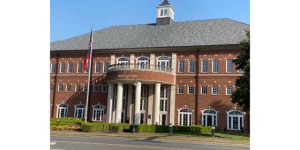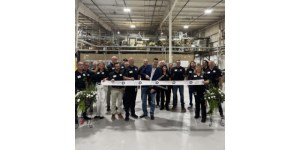Blind people march in Atlanta for jobs, education
Published 9:55 am Tuesday, July 3, 2007
ATLANTA (AP) — At sunrise Tuesday, hundreds of people — most tapping the ground with white canes and a few making the trip on roller blades — marched en masse from a downtown hotel to a city park more than half a mile away to make a point: Blind people can do what other people do.
The early morning event, organized by the National Federation of the Blind, was billed as a civil rights march.
“We are here to march for independence for blind people across America,” said parade marshal Larry Streeter, a school principal from Raleigh, N.C. “We’re here to change what it means to be blind and let the world know we are indeed able people who have many talents.”
Two of the main goals: jobs and education.
“The blind have a 70 percent unemployment rate, and we have a 10 percent rate of being taught to read and write Braille in our schools in this country,” said NFB president Marc Maurer, a lawyer from Maryland.
The NFB also has pushed for accessibility in other areas. In June, the group won an agreement with the nation’s largest nonbank owner of automated teller machines to improve access for blind people at ATMs in malls, gas stations and pharmacies.
Maurer said the NFB — founded in 1940 and now with more than 50,000 members — decided to incorporate a march into this year’s annual convention in Atlanta because the city was the symbolic heart of the civil rights movement for racial equality in the 1960s. Congressman John Lewis, D-Atlanta, a veteran of that movement, led the march.
“It is important,” Lewis said. “I’ve done a lot of marching during my lifetime. This is probably the first time to get up this early to march.”
Organizers said 1,000 or more people took part. The Atlanta police estimate was 700.
Al Elia, 33, a computer consultant from Boston, was on hand with his guide dog, Zion. Born with retinitis pigmentosa, a degenerative eye disease, Elia said his vision recently dropped to a point where he could no longer do his job without retraining.
He said his most important issue is access to study materials for advanced degrees. Although educators now are required to provide blind-accessible school books in grades K-12, Elia said, “They still haven’t done that for college and advanced degree texts. I can tell you from trying to get study materials to go to law school, it’s something that needs to happen.”
Tai Tomasi of Salt Lake City, and Lisa Marie Martinez of Union City, Calif., were among those who made the march on inline skates.
There were a few spills, and Martinez said it was “scary.”
But she added, “I want to show other blind people that we can take it up a notch.”
The march was held early, in part to avoid traffic problems but also to accommodate the convention’s busy agenda, said NFB spokesman John Pare. As the long line of blind people drew curious glances from the few passers-by on the street, it was apparent that the marchers were making another statement. Among the hundreds of marchers, only a handful wore dark glasses to hide their eyes.
And they didn’t use euphemisms like “visually impaired.”
“Just because we can’t see, it isn’t as big a problem as people think,” Pare said. “We want people to come to grips with their blindness and say they’re blind.”





